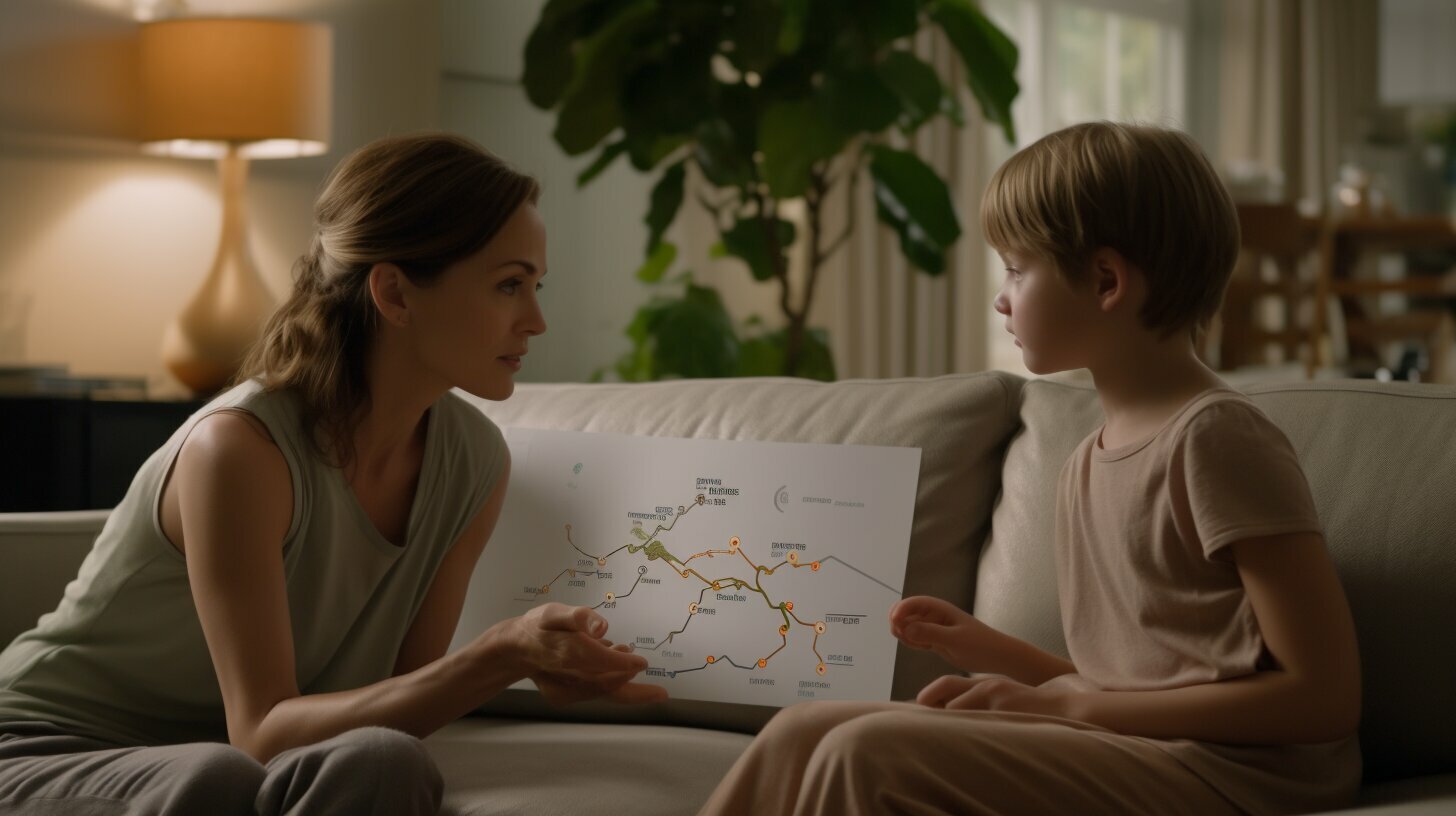Valentine’s Day is a special holiday that celebrates love and friendship. As a parent or caregiver, you may wonder how to explain this holiday to young children in a way that is age-appropriate and easy to understand.
Don’t worry, we’ve got you covered! In this guide, we’ll provide simple explanations, fun activities, and educational resources to help you teach your child about the importance of Valentine’s Day.
Key Takeaways:
- Valentine’s Day is a holiday that celebrates love and friendship
- Explaining the history and traditions of Valentine’s Day can be a fun and educational experience for children
- Valentine’s Day provides an opportunity to teach kindness, empathy, and inclusivity
- There are many age-appropriate books, movies, and activities that can help children learn about Valentine’s Day
- Celebrating Valentine’s Day as a family can be a meaningful and enjoyable experience
What is Valentine’s Day?
Valentine’s Day is a special day that we celebrate every year on February 14th. It’s a day when we show love and appreciation for the people we care about, such as family members, friends, and significant others.
On Valentine’s Day, people often exchange cards, gifts, and special treats like chocolates or flowers. It’s a great opportunity to express our feelings and make loved ones feel special.
Valentine’s Day is a holiday that has been celebrated for hundreds of years, and it has a long history and many traditions associated with it. Despite this, at its core, Valentine’s Day is really just about love and kindness.
So whether you’re spending Valentine’s Day with a romantic partner or simply showing appreciation for the people you care about, it’s a special day to spread love and kindness to those around you.

The History of Valentine’s Day
Valentine’s Day has a fascinating history that dates back centuries. The exact origins of the holiday are unclear, but it is believed to have originated as a Christian feast day in honor of Saint Valentine. There are a few different theories about which Saint Valentine the holiday is named after, but most historians agree that he was a martyr who lived in ancient Rome.
One popular legend suggests that Saint Valentine was a priest who served during the third century. When the Roman Emperor Claudius II outlawed marriage for young men because he believed that single men made better soldiers, Saint Valentine continued to perform marriages in secret. When he was eventually caught, he was sentenced to death, and it is said that he sent a letter to his girlfriend signed “From your Valentine” before he was executed.
Valentine’s Day began to be associated with romantic love during the Middle Ages, when the tradition of courtly love became popular. By the 15th century, it had evolved into an occasion for lovers to exchange gifts and tokens of affection. The first Valentine’s Day card is believed to have been sent by Charles, Duke of Orleans, to his wife while he was imprisoned in the Tower of London in 1415.
The holiday became increasingly commercialized in the 19th century, with the production of mass-market Valentine’s Day cards and the rise of gift-giving. Today, Valentine’s Day is celebrated around the world in many different ways, but the core focus remains on expressing love and affection for the special people in our lives.
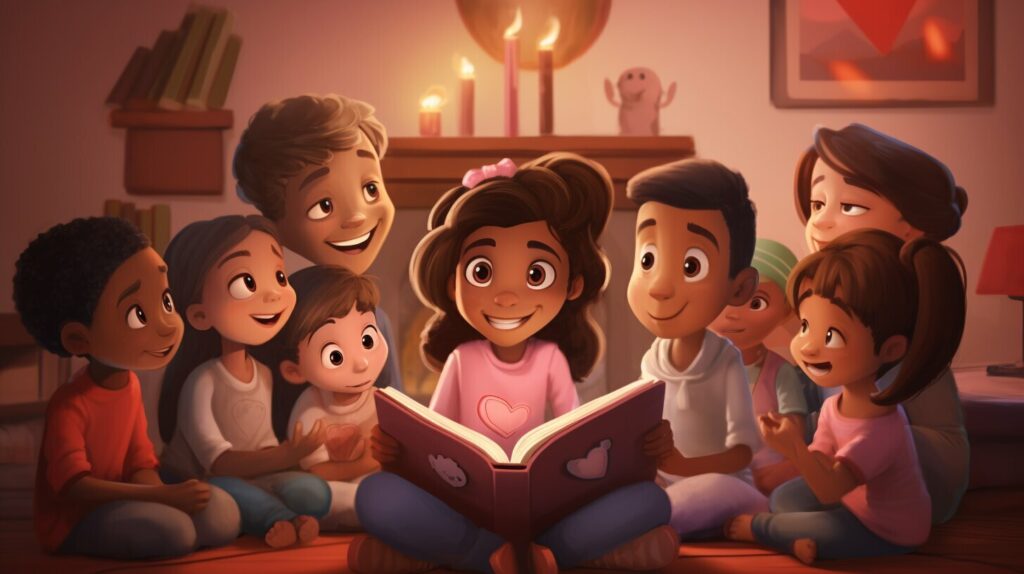
Valentine’s Day Symbols and Traditions
Valentine’s Day is a day to show love and appreciation to those we care about. It is also a day for celebrating love and friendship. So, how did all these symbols and traditions come about? Let’s take a look.
| Symbol | Meaning |
|---|---|
| Hearts | Hearts represent love and affection. They are often associated with the heart-shaped leaves of the ancient Greek plant, silphium, which was used as a contraceptive. |
| Flowers | Flowers are a traditional Valentine’s Day gift, especially red roses, which symbolize love and passion. Other flowers, such as tulips and daisies, can also convey different meanings of love and friendship. |
| Chocolates | Chocolate is a popular gift because it is associated with pleasure and indulgence. It is said that chocolate contains phenylethylamine, a chemical that mimics the feeling of falling in love. |
| Cards | Exchanging cards is a long-standing Valentine’s Day tradition. The first Valentine’s Day card was sent in the 15th century by Charles, Duke of Orleans, to his wife while he was imprisoned in the Tower of London. |
These symbols and traditions are used to express love and affection on Valentine’s Day. Whether it’s giving chocolates, flowers, or cards, the important thing is to show your love and appreciation to those you care about. And don’t forget, Valentine’s Day is not just about romantic love, but also about celebrating all types of relationships, including family and friends.

Celebrating Love and Friendship
Valentine’s Day is all about showing love and appreciation for the people in our lives. As a parent or caregiver, you can help your child participate in this special day by encouraging kindness and creating meaningful experiences.
One way to celebrate love and friendship is by making handmade cards or gifts. This allows your child to express their creativity and show their loved ones how much they care. You can also encourage your child to perform acts of kindness, such as helping an elderly neighbor or donating toys to charity.
Another idea is to plan a fun activity with friends or family. You can have a Valentine’s Day-themed movie night, bake heart-shaped cookies, or create a scavenger hunt with clues that lead to small gifts or treats.
It’s important to remember that Valentine’s Day is not just about romantic love, but also about appreciating all types of relationships. Encourage your child to think about their classmates, teachers, and family members and how they can show them love and kindness on this special day.

By celebrating love and friendship in meaningful ways, you can help your child understand the importance of kindness and empathy. These values are essential for building positive relationships and contributing to a happier, more inclusive world.
Valentine’s Day Crafts and Activities
If you’re looking for fun and creative ways to celebrate Valentine’s Day with your child, there are plenty of craft ideas and activities you can try out. Not only will they provide an opportunity for quality time together, but they will also help encourage your child to express their love and appreciation for others.
1. Handmade Cards
A classic Valentine’s Day activity, making handmade cards is a great way for your child to express their creativity while also showing others how much they care. You can provide them with colored paper, markers, stickers, and other decorative items to make their cards extra special.

2. Heart-Shaped Treats
Your child will love making heart-shaped treats for their loved ones on Valentine’s Day. Whether it’s heart-shaped cookies, pancakes, or even sandwiches, they will have fun getting creative in the kitchen and showing off their culinary skills.
3. Love Jar
A love jar is a thoughtful gift your child can make for someone special in their life. All they need is a mason jar, some colored paper, and a pen. They can write down all the reasons why they love someone and put them in the jar to be opened and read on Valentine’s Day.
4. Friendship Bracelets
Teach your child about the importance of friendship by making friendship bracelets together. They can use colorful yarn or string and follow different patterns to create unique bracelets for their friends.
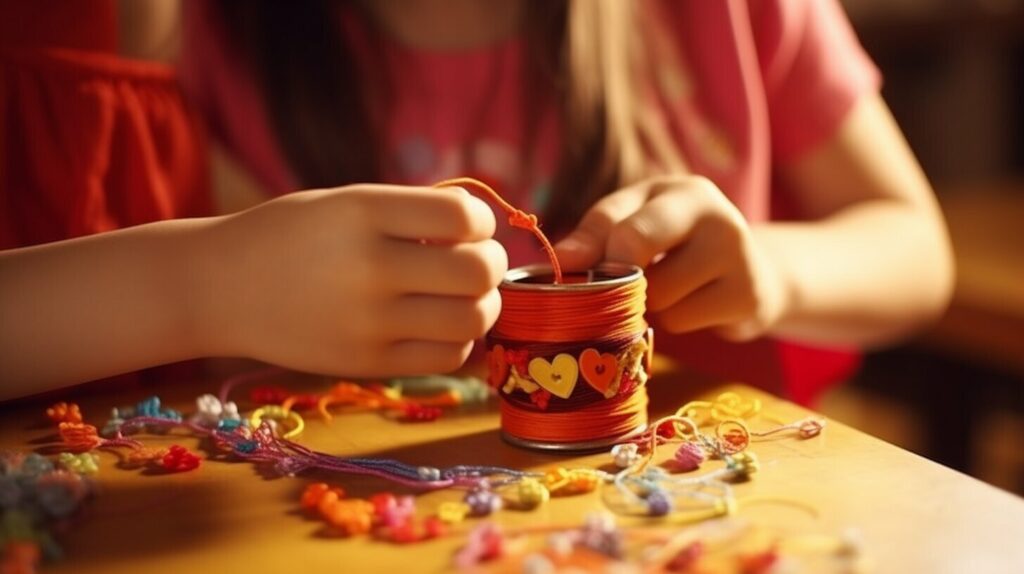
5. Love Notes Scavenger Hunt
Create a fun scavenger hunt for your child by hiding love notes around the house for them to find. Each note can contain a clue leading them to the next one, with a special surprise waiting for them at the end.
These are just a few ideas to get you started, but there are endless possibilities when it comes to Valentine’s Day crafts and activities. The key is to have fun, be creative, and spread love and kindness to those around you.
The Importance of Inclusive Celebrations
Valentine’s Day is a special opportunity to celebrate all types of love and affection, not just romantic love. It’s important to ensure that everyone feels included and valued on this day, no matter their relationship status or orientation. By embracing diversity and inclusivity, we can create a more loving and accepting community.
| Ways to Make Valentine’s Day Inclusive | Why It’s Important |
|---|---|
| Encourage children to make cards or gifts for family, friends, and classmates. | Teaches children to appreciate all types of relationships and show kindness to others. |
| Acknowledge and celebrate different types of love, such as the love between siblings, grandparents, or pets. | Helps children understand that love comes in many forms and is not limited to romantic relationships. |
| Avoid using exclusive language or assuming everyone has a romantic partner. | Makes everyone feel included, regardless of their relationship status or orientation. |
| Include diverse representation in books, movies, and decorations. | Helps children understand that love and friendship can exist between people of different races, cultures, and backgrounds. |
Remember, Valentine’s Day is about celebrating love and kindness in all its forms. Embrace inclusivity and diversity to create a more loving and accepting community for all.
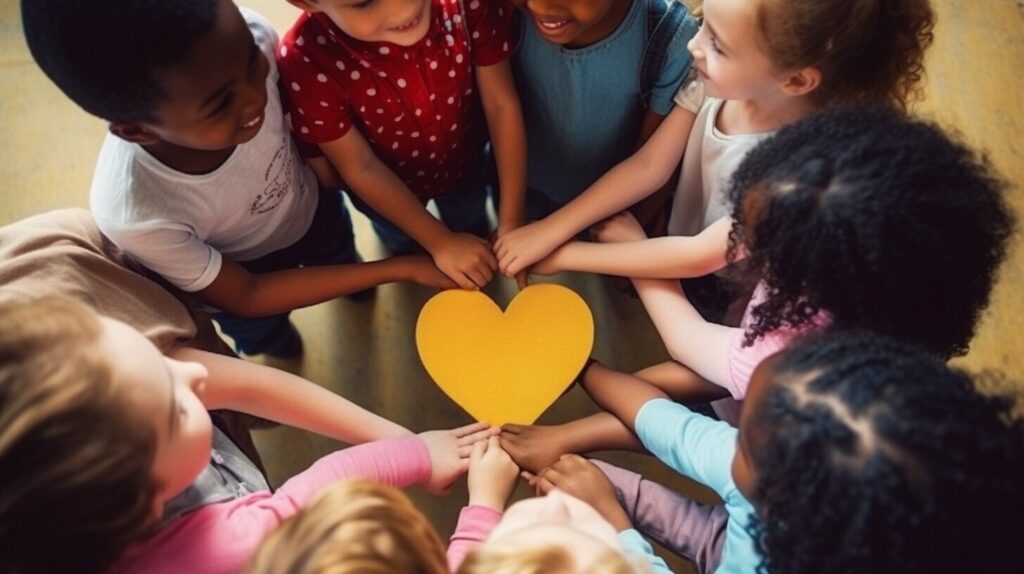
Teaching Kindness and Empathy on Valentine’s Day
Valentine’s Day is not just about showing love and appreciation to those close to us, it’s also an opportunity to teach children about the importance of kindness and empathy towards others. By encouraging children to be kind and considerate, we can help them cultivate positive relationships and become more socially aware. Here are some tips on how to teach kindness and empathy on Valentine’s Day:
- Lead by example: Children learn by watching and imitating those around them. Show your child how to be kind and empathetic by modeling behavior such as listening actively and expressing gratitude.
- Encourage acts of kindness: Challenge your child to perform small acts of kindness, such as making a card for a neighbor or helping a friend with a task. These gestures can help children understand the impact of their actions on others and develop a sense of empathy.
- Discuss diversity and inclusion: Use Valentine’s Day as an opportunity to talk about different types of relationships and the importance of valuing diversity. Help your child understand that everyone deserves love, respect, and kindness regardless of their differences.
- Practice listening skills: Encourage your child to actively listen to others and validate their feelings. This can help build empathy and foster understanding between people with different perspectives.
- Read books about kindness: Reading books with themes of kindness and empathy can be a great way to reinforce these values with your child. Some great options include “The Giving Tree” by Shel Silverstein and “Wonder” by R.J. Palacio.
By emphasizing kindness and empathy on Valentine’s Day, we can help children develop important social skills and values that will serve them well throughout their lives.
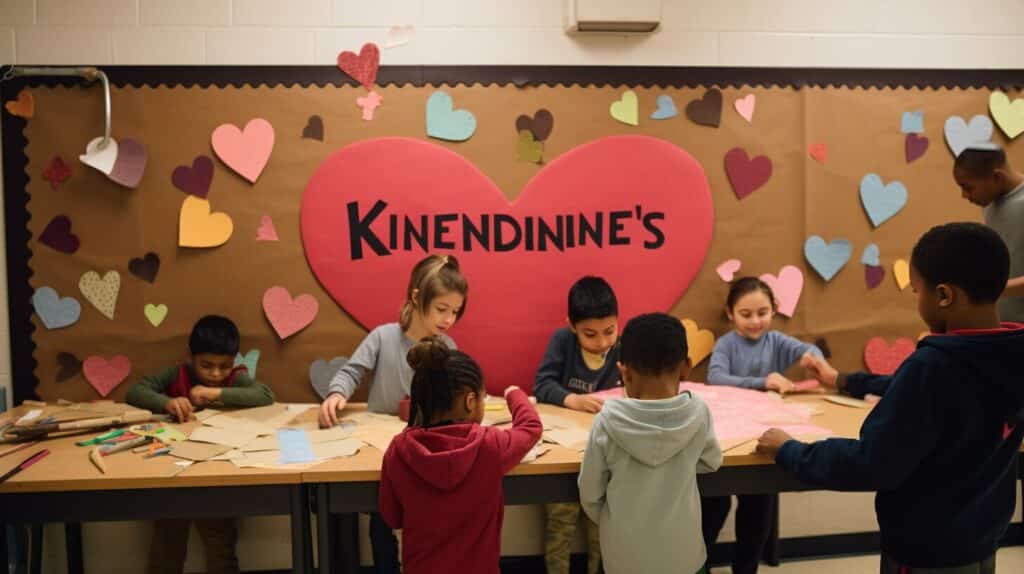
Valentine’s Day Books and Movies
If you want to further explore the themes of love, friendship, and kindness with your child, reading books and watching movies about Valentine’s Day can be a fun and educational activity. Here are some age-appropriate suggestions:
- The Story of Valentine’s Day by Clyde Robert Bulla: This book provides a simple explanation of the history and traditions of Valentine’s Day.
- Happy Valentine’s Day, Mouse! by Laura Numeroff: This fun and colorful book follows Mouse as he makes and delivers Valentine’s Day cards to his friends.
- Arthur’s Valentine by Marc Brown: This book features the beloved Arthur character as he tries to make a special Valentine’s Day card for his crush.
- Be My Valentine, Charlie Brown: This classic Peanuts movie follows Charlie Brown and his friends as they navigate the ups and downs of Valentine’s Day.
 Valentine’s Day: This romantic comedy is not necessarily appropriate for young children, but can be a good choice for older kids or for parents to watch after the kids have gone to bed.
Valentine’s Day: This romantic comedy is not necessarily appropriate for young children, but can be a good choice for older kids or for parents to watch after the kids have gone to bed.
These books and movies can be a great starting point for conversations about love, friendship, and kindness, and can help your child better understand the meaning and significance of Valentine’s Day.
Exploring Different Cultures’ Celebrations
Valentine’s Day is celebrated in many countries around the world, but the traditions and customs vary from culture to culture. Exploring how different cultures celebrate this holiday with your child can be a fun and educational experience for both of you.
| Country | Celebration |
|---|---|
| Japan | Valentine’s Day is primarily a day for women to give chocolates to the men in their lives, including friends, family members, and coworkers. A month later, on March 14th, is White Day, where men return the favor by giving gifts to the women. |
| China | The Qixi Festival, also known as the Chinese Valentine’s Day, is celebrated on the seventh day of the seventh lunar month. It is based on a romantic legend of two lovers who were separated and could only meet once a year on that day. Couples exchange gifts and go on romantic dates. |
| South Korea | Valentine’s Day is celebrated on two different dates: February 14th, where women give gifts to men, and March 14th, known as White Day, where men return the favor. On April 14th, singles celebrate Black Day by eating a dish of black noodles and commiserating with others who are not in relationships. |
These are just a few examples of how Valentine’s Day is celebrated around the world. When exploring different cultures’ celebrations with your child, it’s important to emphasize the value of diversity and how people in different parts of the world express their love and appreciation in unique ways.

Answering Children’s Questions about Valentine’s Day
As a parent or caregiver, it’s natural to expect questions from children about Valentine’s Day. Here are some common questions and simple answers to help guide you:
- “What is Valentine’s Day?”
- “Why do we give Valentine’s Day cards and gifts?”
- “Who is Saint Valentine?”
- “Do I have to be in love to celebrate Valentine’s Day?”
- “Can I make my own Valentine’s Day card?”
Valentine’s Day is a special day to show love and appreciation for the people we care about. It can be for family, friends, or anyone you love!
We give cards and gifts on Valentine’s Day to show our love and appreciation for others. It’s a way to express our feelings and make others feel special.
Saint Valentine is a historical figure who is associated with the origins of Valentine’s Day. The story goes that he was a priest who performed secret marriages for couples in love, and he became known as the patron saint of love.
No, absolutely not! Valentine’s Day is about celebrating all types of love and relationships, not just romantic ones. You can celebrate with family, friends, classmates, and even your pets!
Yes, making your own Valentine’s Day card is a great way to show your creativity and express your feelings. You can use construction paper, markers, glitter, or anything else you like!
Remember, there is no right or wrong way to celebrate Valentine’s Day. It’s a day to show love, kindness, and appreciation for the people in your life. Encourage your children to embrace the holiday with an open heart and create meaningful experiences together.

Conclusion
Valentine’s Day can be a fun and meaningful holiday for children to celebrate love, friendship, and kindness. By explaining the purpose and history of the holiday, teaching children about different traditions and cultures, and engaging in age-appropriate activities that promote inclusivity and empathy, parents and caregivers can create positive experiences and lasting memories.
Remember, Valentine’s Day is not just about romantic love but also about celebrating all types of relationships. Encourage children to show appreciation and kindness to family, friends, classmates, and even strangers. By modeling these values and behaviors, we can help create a more loving and compassionate world.
How Can I Explain Sarcasm to My Child in a Way They Can Understand?
When it comes to explaining sarcasm to children, it’s important to keep it simple and fun. Use relatable examples and tone of voice to show them the contrast between the literal meaning and the intended sarcastic meaning. Encourage questions and explain that it’s a form of humor. These tips for explaining sarcasm to children will make it easier for them to grasp this nuanced language skill.
FAQ
Q: What is Valentine’s Day?
A: Valentine’s Day is a special day to show love and appreciation for the people we care about.
Q: What is the history of Valentine’s Day?
A: Valentine’s Day has its origins in ancient Roman and Christian traditions. It is named after Saint Valentine and has evolved over time to become a celebration of love and friendship.
Q: What are the symbols and traditions of Valentine’s Day?
A: Common symbols and traditions of Valentine’s Day include hearts, flowers, chocolates, and exchanging cards or gifts. These are used to express love and affection.
Q: How can children celebrate Valentine’s Day?
A: Children can celebrate Valentine’s Day by showing kindness, appreciation, and making special gestures for their loved ones and friends.
Q: What are some crafts and activities children can do on Valentine’s Day?
A: Children can make cards, create handmade gifts, and engage in activities that promote love and friendship. There are many fun and age-appropriate ideas to choose from.
Q: How can we make Valentine’s Day inclusive?
A: It’s important to remember that Valentine’s Day is not just about romantic love. We can include everyone by appreciating all types of relationships, including family, friends, and classmates.
Q: How can we teach kindness and empathy on Valentine’s Day?
A: Valentine’s Day presents an opportunity to teach children about kindness, empathy, and inclusivity. We can encourage them to think of others, perform acts of kindness, and spread love and positivity.
Q: Are there any recommended books or movies for children to learn about Valentine’s Day?
A: Yes, there are age-appropriate books and movies that children can read or watch to further understand the concept of Valentine’s Day and its themes of love, friendship, and kindness.
Q: How is Valentine’s Day celebrated in different cultures?
A: Valentine’s Day is celebrated differently in various cultures around the world. Exploring these celebrations can help children learn about diverse perspectives on love and friendship.
Q: How can we answer children’s questions about Valentine’s Day?
A: It’s important to provide simple, age-appropriate answers to children’s questions about Valentine’s Day. This helps parents and caregivers navigate conversations about the holiday.




